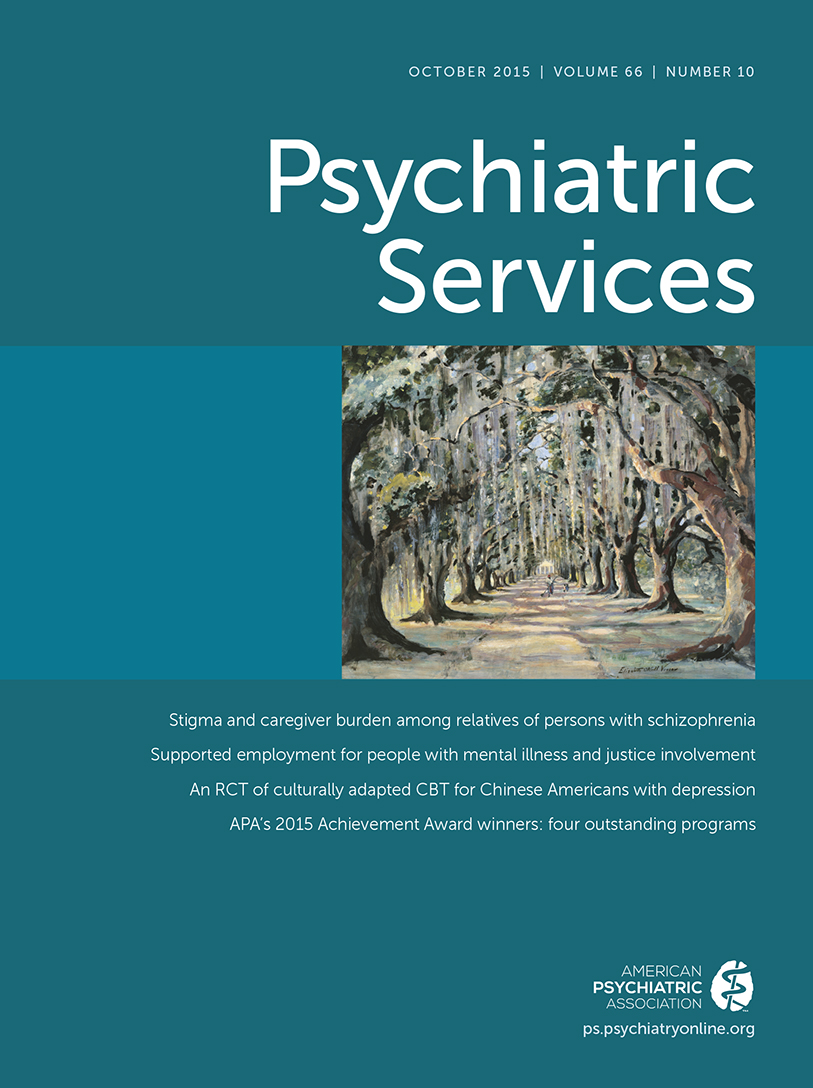Suicide Prevention in Patient and Nonpatient Populations: In Reply
IN REPLY: We thank Dr. Coffey and colleagues for their commentary on our recent study comparing suicide risk for veterans who did and did not use VHA services. Comparing this study with their recent analysis of suicides among Henry Ford Health System members highlights the importance of continued evaluation of suicide prevention activities.
The main findings from our analysis were that veterans, particularly female veterans, were at higher and increasing risk of suicide, compared with their nonveteran peers and that use of VHA services mitigated some of this risk. By compiling death certificate records for all known suicide decedents, the Department of Veterans Affairs (VA) archive of state suicide data made direct comparisons between VHA and non-VHA veterans possible for the first time (1–3). Veteran status in this database is carefully validated by using VA and Department of Defense records (2). Validation of veteran status was shown to have an impact on effect estimates in a study evaluating the relationship between veteran status and firearm suicide (3). Death certificate indication of military history is particularly problematic for female and younger veterans (2)—two of the fastest-growing veteran subgroups for which there is an immediate need to better understand suicide risk and trends.
The VA has, however, been evaluating suicide risk among VHA-utilizing veterans since implementing the Suicide Prevention Program in 2007 (1). As summarized in our report, VA’s Suicide Prevention Program is poised to reach the broad population of VHA users and provide access to an integrated network of services aimed at reducing risk. Initiatives include awareness and education campaigns such as “The Power of 1,” a 24-hour Veterans Crisis Line, universal training in risk recognition and management for VHA employees, and the placement of suicide prevention coordinators in each VA medical center to support high-risk patients. Recent efforts also include the development of predictive modeling strategies to identify VHA patients at high risk of suicide (4).
This strong, multifaceted, and continually evolving program makes the VA a clear leader in suicide prevention. As such, we are pleased that our recent publication shed light on the pressing need to increase awareness of risk among female veterans. Response efforts will include continued research and program evaluation activities conducted collaboratively across the VA Suicide Prevention Program and VA’s Women Veterans Health Care. Comprehensive, high-quality women’s health care is already a top priority within the VA. Every medical center has a women veterans program manager to serve as an administrative leader for women’s health programs and an advocate for women veterans, and a Women Veterans Call Center has been established as a resource for women veterans seeking information on VA benefits and services.
Similarly, we recommend that efforts to evaluate gender and age differences in the HFHS population are undertaken. The effectiveness of intervention programs is likely to vary considerably by these factors, and identifying such differences is a key step toward targeting and tailoring programs to prevent additional loss of life.
1 : Suicide Data Report, 2012. Washington, DC, US Department of Veterans Affairs, Mental Health Services, Suicide Prevention Program, Feb 2013Google Scholar
2 : Misclassification of veteran status on Washington State death certificates for suicides from 1999 to 2008. Annals of Epidemiology 23:298–300, 2013Crossref, Medline, Google Scholar
3 : A reconsideration of the correlation between veteran status and firearm suicide in the general population. Injury Prevention 20:317–321, 2014Crossref, Medline, Google Scholar
4 : Predictive modeling and concentration of the risk of suicide: implications for preventive interventions in the US Department of Veterans Affairs. American Journal of Public Health (Epub ahead of print, June 11, 2015)Google Scholar



